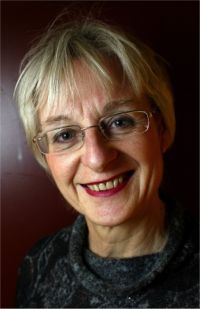The force of example
Sure, the situation for women in science has improved. But a lot remains to be done, says Kari Melby, chair of the Committee for Mainstreaming – Women in Science.

"The number of women in academic positions has increased, including in top positions. A fair number of women get post-doctoral research positions, and the gender ratio among research fellows is generally good. The issue of gender imbalance gets more attention than it used to, which is good. At the same time, we observe that institutions like the University of Tromsø has the same low ratio of female professors today as it had 20 years ago."
Impressive at NTNU
Kari Melby is a professor of history and academic head of Department of interdisciplinary studies of culture at the Norwegian University of Science and Technology (NTNU). And she observes, with a mixture of pride and astonishment, that NTNU has made a giant leap towards gender balance.
"Not to be biased, but this is rather impressing, considering that natural sciences and technology are major research fields at NTNU. This stands in contrast to what has happened – or failed to happen – at the University of Tromsø. There gender equality work has been at a status quo for years."
Taking stock
Melby hopes and believes that the Resource Bank for gender mainstreaming will function as a tool for gender equality work.
"We have, little by little, gained some knowledge of the gender equality situation in the academic sector. However, this knowledge has not been readily available to others. The Resource Bank gives us an opportunity of taking stock, and to better understand which measures work. As such, the Resource Bank is a veritable gold mine of knowledge, and an important tool for the universities and university colleges in their work to improve gender balance – work that is, in fact, required by law," she says.
Agnete Vabø at NIFU STEP has done several studies of gender equality in the academic sector. She relates that there is little exchange of experiences of gender equality measures across research fields. In addition, there is no general overview of ideas and actions taken.
"The University of Oslo and NTNU have assigned relatively large sums of money for gender equality work. Through this, they have achieved experience on measures that are effective. These experiences may now be more easily at hand for others. Hopefully, the Resource Bank will also uncover what we still don’t know much about. For instance, little is known about what signify the good research environments, the ones that succeed in improving the gender balance," Vabø says.
In other words, we are heading in the right direction, but there is still some way to go. Melby believes that future challenges are more or less the same as the ones in the past: recruitment of women, but also to promote and keep the women that are already recruited. – NIFU STEP studies show that men advance faster to top positions, and more women than men leave the academic world.
Efforts by government
Melby has mixed feelings about the Government’s efforts in this field, also on the 2005 White Paper on Research, “Commitment to Research”.
"It is positive that the White Paper points to the EU gender mainstreaming strategies, and I am pleased that the Ministry promises to ensure that the institutions and the Research Council of Norway follow up on gender equality work. In addition, the Ministry demands that the institutions work to increase the ratio of women in Professor II positions. This is a good start," Melby says.
"However, I wish there were more energy invested in the issue. There is a general disappointment in the lack of mainstreaming of gender equality in the White Paper. Practically everything that has to do with gender equality is hidden in chapter of barely one page. Thus, the Government does not clarify how improved gender balance is important for the quality of research, and for the credibility of the institutions."
Natural sciences forgotten
Kari Melby points to two areas where she thinks the White Paper could have been more dynamic:
"The Government wants to strengthen research in the natural sciences. Everyone knows that recruitment is down in this area, and especially among girls. It is striking, then, that the importance of improved gender balance is not underlined; because this would probably have improved recruitment. More women among the academic staff might also affect the recruitment of female students."
The second example Melby points to, is the quality measures known as Centres of Excellence and Outstanding Young Researchers. "Both measures have already received criticism because they are gender imbalanced. It is important to make sure that such quality measures really promote quality across all research fields and both genders; otherwise they are simply not good enough."
Furthermore, Melby feels that the White Paper should have specified expectations to the Research Council of Norway. "Here the statements are too general and lack commitment. It is my belief that the Research Council would benefit from implementing the EU gender mainstreaming strategy, thus including the perspective of gender equality in all aspects of their activities."
Boardroom strategies
Another area where gender imbalance is heavily debated is the business boardrooms. A law is proposed demanding affirmative action to ensure 40 per cent women on any board. Kari Melby thinks that some of the strategies in this area can easily be transferred to the academic sector.
"One cannot pass the same affirmative action laws for the academic sector as for business, because hiring in academic positions means a different system of evaluation. However, I believe that it makes sense to have target figures on women in academic positions. Some people will find such numbers unrealistic, but numbers can work as an inspiration."
"Also economic incentives can be used to encourage increased female ratio. After all, this is quite common in research politics – wanted behaviour is rewarded, whether we are talking about Ph.D. degrees, student credits or publications. The University of Oslo has already established a reward system for departments that succeed in improving the gender balance. The Government could have done something similar, and by this signal the importance of recruitment of women into top academic positions."
Other measures
In addition to target figures and economic incentives, Melby mentions other measures that she believes may be effective. "I believe in mentor programmes, qualification scholarships for female Associate Professors, and the Government’s focus on research schools. Improved care of young researchers and better work environments will benefit everyone, but women will benefit even more."
The Committee for Mainstreaming – Women in Science started out by mapping gender equality activities in the academic sector, and in what way it is mainstreamed – or not – in the strategies and daily work of the institutions. "This has given us a good starting point for further dialogue with the institutions, to inspire them to continued work for gender balance in science. We will also contribute to increased contact and exchange of experiences between the ‘gender equality workers’ in the different institutions. Moreover, we will continue our dialogue with the Research Council to contribute to increased gender mainstreaming in their activities. In 2005 we plan to give scholarships to master students who write their thesis on subjects relevant to our work. We will also start a couple of projects that follow and evaluate measures in the institutions," Melby says.
"We need to know more about the effect of the measures that have been tried out, like mentor programmes and qualification scholarships for female Associate Professors. But much knowledge has already become available through the Resource Bank," she concludes.
Professor Kari Melby chairs Committee for Mainstreaming – Women in Science, which was established by the Ministry of Education and Research in January 2004. In this interview she takes stock of the work for gender equality in science in Norway, and presents her thoughts on future challenges.
